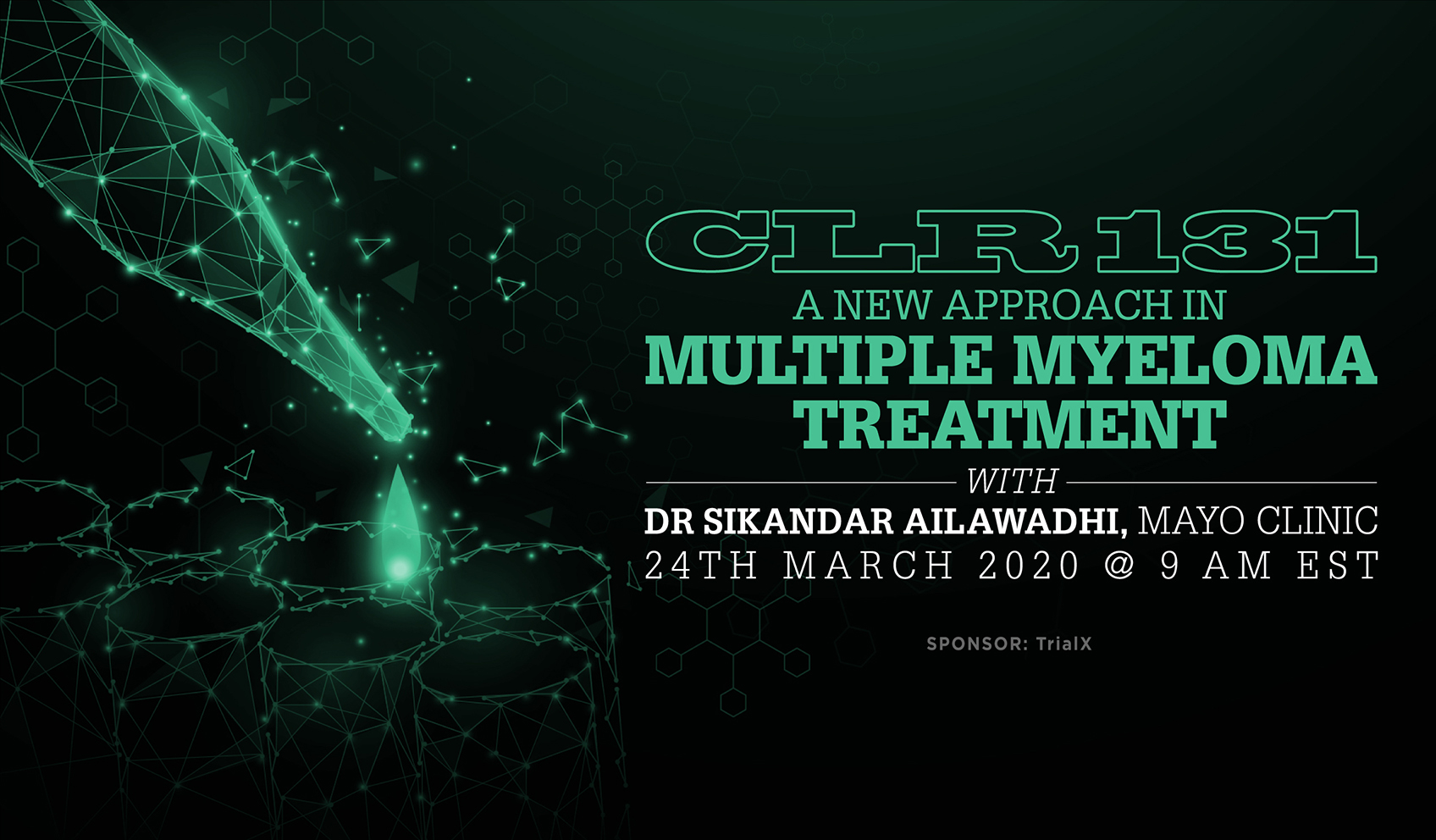
Hear Talk Audio
CLR 131 – A New Approach in Multiple Myeloma Treatment
CLR 131 is a targeted small-molecule that is being developed for the treatment of myeloma and lymphoma, as well as pediatric and head & neck cancers by Cellectar Biosciences. It works by delivering a radioactive, toxic compound directly to tumor cells, while limiting exposure to healthy cells. CLR 131 was granted Orphan Drug designation for the treatment of multiple myeloma by both the U.S. and the European Commission. We are talking to Dr. Sikander Ailawadhi, the lead investigator on several CLR 131 trials, to get his perspective on the potential and future of CLR 131 as an important addition to myeloma treatments.


